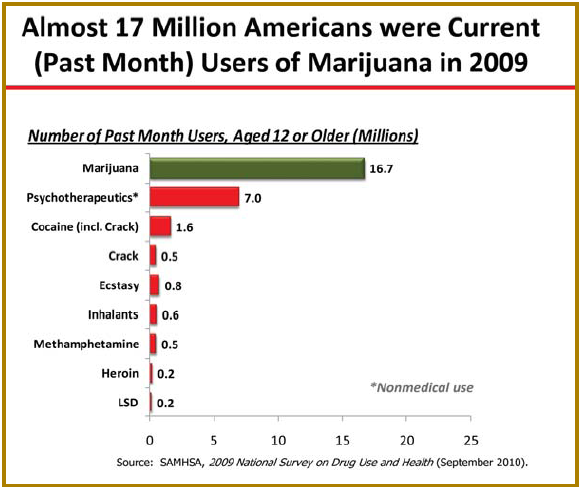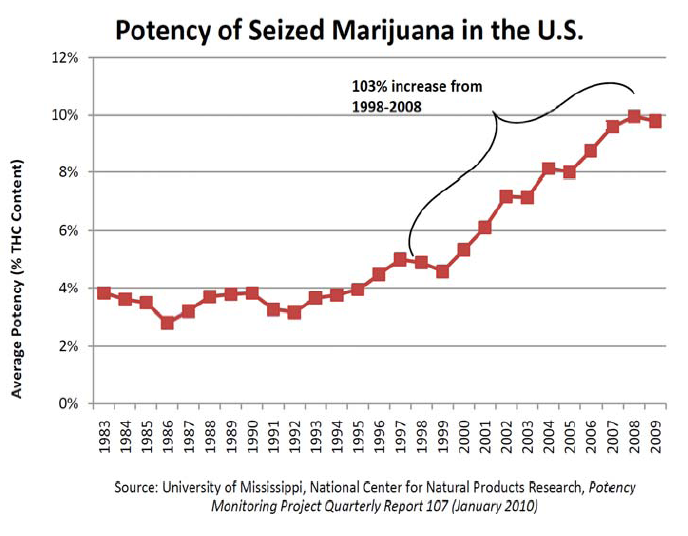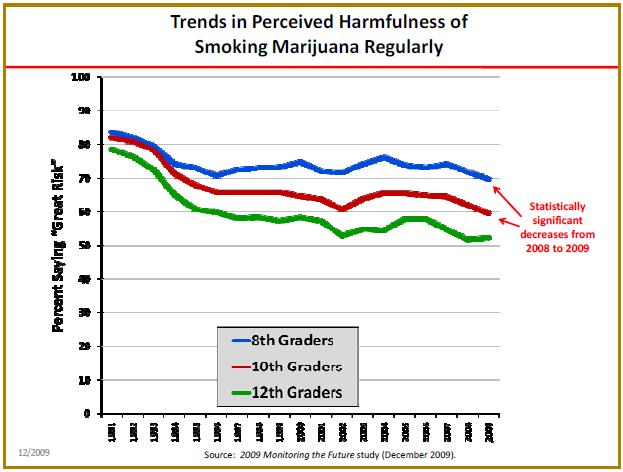Marijuana: Know the Facts
Marijuana is a common drug made from the dried, shredded leaves, flowers, and other parts of a plant in the genus Cannabis. The term cannabis generally refers to marijuana and other drugs made from the same plant, including sinsemilla, hashish, and hash oil.
Marijuana is the most commonly used illicit drug. Although marijuana is sometimes characterized as a “harmless herb,” the cultivation, trafficking, and use of the drug have a negative impact on many aspects of our lives, from public health to national security, transportation, the environment, and educational attainment.
drug have a negative impact on many aspects of our lives, from public health to national security, transportation, the environment, and educational attainment.
The Obama Administration, together with Federal partners and State and local officials, is working to reduce the use of marijuana and other illicit drugs through development of strategies that more fully integrate the principles of prevention, treatment, and recovery.
National Trends
- Rates of marijuana use among 8th, 10th, and 12th graders are higher than rates for any other illicit drug.
- According to the 2009 National Survey on Drug Use and Health (NSDUH), 16.7 million people age 12 or older were current marijuana users, meaning they used the drug during the month prior to taking the survey (see chart, above).
- NSDUH also shows that from 2008 to 2009, the rate of current illicit drug use among young adults aged 18 to 25 climbed 8 percent, from 19.6% to 21.2%, driven largely by a 10 percent rise in marijuana use (from 16.5% to 18.1%).
- In 2009, there were 2.4 million new past‐year users of marijuana. The average age of initiation dropped from 17.8 in 2008 to 17.0 in 2009.
- The average potency of marijuana has more than doubled since 1998.
Health Effects
 Marijuana is classified as a Schedule I drug, meaning it has a high potential for abuse and no currently accepted medical use in treatment in the United States.6 In recent decades, marijuana growers have been genetically altering their plants to increase the percentage of delta‐9‐tetrahydrocannabinol (THC), the main active ingredient in marijuana. The average potency of tested marijuana from Federal seizures more than doubled from 1998 to 2008, as shown at left.
Marijuana is classified as a Schedule I drug, meaning it has a high potential for abuse and no currently accepted medical use in treatment in the United States.6 In recent decades, marijuana growers have been genetically altering their plants to increase the percentage of delta‐9‐tetrahydrocannabinol (THC), the main active ingredient in marijuana. The average potency of tested marijuana from Federal seizures more than doubled from 1998 to 2008, as shown at left.
THC acts upon specific sites in the brain called cannabinoid receptors, triggering a series of cellular reactions that ultimately lead to the “high” users experience when they smoke the drug. Marijuana intoxication can cause distorted perceptions, impaired coordination, difficulty in thinking and problem solving, and problems with learning and memory. Studies have shown an association between chronic marijuana use and increased rates of anxiety, depression, suicidal thoughts, and schizophrenia. Other research has shown marijuana smoke to contain carcinogens and to be an irritant to the lungs. In fact, marijuana smoke contains 50‐70 percent more carcinogenic hydrocarbons than does tobacco smoke.
Prevention
To reduce the prevalence of marijuana, particularly among youth, the Federal Government is implementing multi‐sector, community‐based methods of prevention and intervention, such as the Drug Free Communities (DFC) program, the Screening, Brief Intervention, and Referral to Treatment (SBIRT) model, and the National Youth Anti‐Drug Media Campaign.
The DFC program strengthens collaboration efforts among prevention organizations to develop evidence‐ and community‐based prevention strategies.12 The SBIRT model also uses a community‐based approach to deliver individualized intervention materials for non‐dependent marijuana users.13 SBIRT programs, which have screened more than 536,000 individuals for marijuana and other drug use, can operate in a variety of locations, such as trauma centers and schools.14 The ability to develop prevention materials that are community based and individually tailored is one of the most important characteristics of the DFC and SBIRT models.
The National Youth Anti‐Drug Media Campaign increases teen exposure to anti‐drug messages through its Above the Influence program, which delivers prevention messaging at the national level and through more targeted efforts at the local community level.
Also vital to the success of prevention programs are grants, such as the Strategic Prevention Framework State Incentive Grant, which provides funds to State, local, and tribal organizations.
Youth at Risk
Marijuana use by teens has been shown to have a profoundly negative effect on their development.16 Results of the 2009 NSDUH study indicate that more than 3.3 million 12‐ to 17‐ year‐olds were past‐year marijuana users, and that 830,000 youths in that age group displayed the characteristics of marijuana dependence or abuse in the past year.
3.3 million 12‐ to 17‐ year‐olds were past‐year marijuana users, and that 830,000 youths in that age group displayed the characteristics of marijuana dependence or abuse in the past year.
The downward trend in youth marijuana use during the late 1990s has ended.18 In 2009, according to NSDUH, the rate of past‐month marijuana use among 12‐ to 17‐year‐olds climbed to 7.3%.19 This is significantly higher than the rate (6.7%) in 2006, 2007, and 2008.
A possible correlation with his phenomenon is that fewer young people today see “great risk” in using marijuana regularly (see chart, above). In 1991, approximately 80 percent of 8th, 10th, and 12th graders perceived there to be “great risk” in using marijuana regularly. In 2009, those rates dropped to about 70 percent of 8th graders, 60 percent of 10th graders, and 55 percent of 12th graders.
Treatment
Long‐term marijuana users who are trying to stop using the drug report symptoms such as irritability, sleeplessness, decreased appetite, anxiety, and drug craving, all of which make it difficult to quit.21 In 2008, nearly 68 percent of primary treatment admissions for youth between the ages of 12 and 17 were for marijuana.22 Although there are no medications for treating marijuana abuse, behavioral interventions, including cognitive behavioral therapy and motivational incentives (i.e., providing vouchers for goods or services to patients who abstain from drug use), have shown efficacy in treating marijuana dependence.
A Threat to the Environment
Outdoor marijuana cultivation sites are becoming increasingly common. These “grows” often result in the destruction of natural habitat from diesel spills, pesticide runoff, and trash from cultivators.24 National parks and other public lands in the United States are used for cannabis cultivation operations, primarily by Mexican criminal groups. Data from the Department of Agriculture Forest Service and the Department of the Interior indicate that more than 4 million marijuana plants were eradicated from U.S. public lands in 2008 alone.
Download PDF
